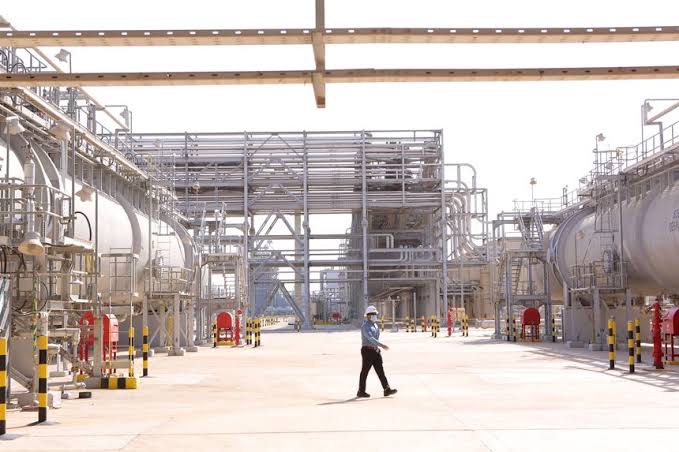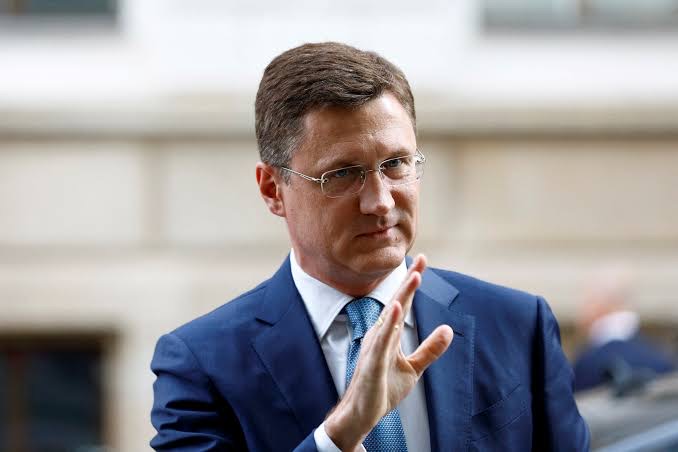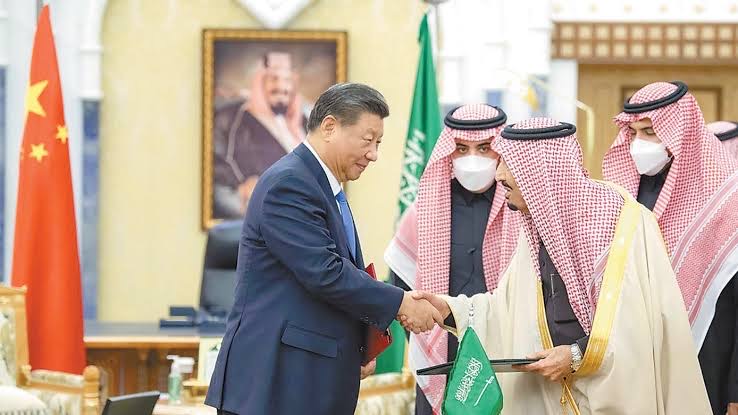
OPEC+ pushes to cut oil production
9 min read
OPEC+ unexpectedly reduced oil output by more than 1 million barrels per day, breaking its promise to maintain supply stability and creating a new risk in the global economy. It represents a sizeable reduction for a market where, despite recent price swings, supply appeared to be constrained for the remainder of the year.
Oil futures and gasoline prices both increased on Monday last week in New York, adding to inflationary pressures that could push central banks around the world to maintain higher interest rates for longer. Why does this organisation have such a significant impact on the market and what do its actions mean for the global economy?
What is OPEC?
The Organisation of the Petroleum Exporting Countries (OPEC) is an organisation that controls oil production by establishing production goals among its 13 members. It was formed in 1960 as a cartel, with the aim of fixing the worldwide supply of oil and its price. Almost 40% of the world’s crude oil is produced by OPEC members. In fact, the United States Energy Information Agency estimates that OPEC exports actually accounts for nearly 60% of all petroleum sold abroad.
This market share means that OPEC’s every action has a significant impact on global oil prices. Saudi Arabia, who produces the most crude oil in OPEC, has a significant impact on oil prices. Historically, when OPEC production objectives were lowered, crude oil prices have risen.
In 2016, when prices were particularly low, OPEC joined forces with 10 other oil producers to create OPEC+, a group of 23 oil-exporting countries which meets regularly to decide how much crude oil to sell on the world market. OPEC+ tailors supply and demand to balance the market. They keep prices high by lowering supplies when the demand for oil slumps.
How has OPEC affected the global economy historically?
Saudi Arabia is the world’s largest producer of crude oil and continues to be OPEC’s most powerful member. Moreover, it is the world’s biggest exporter of crude oil. Oil prices spike sharply whenever Saudi Arabia reduces their oil production, and they fall sharply when Saudi Arabia increases their output.

The Middle Eastern country has been able to dictate oil prices since the 1973 Arab oil embargo by regulating supply. Saudi Arabia’s and other OPEC countries’ fluctuating production levels are to blame for all significant shifts in oil prices in recent memory.
Understanding the 1973 energy crisis
On October 19, 1973, the OPEC decided to impose an oil embargo on there United States as a result of then-president Richard Nixon’s decision to give Israel $2.2 billion in emergency aid in support of the Yom Kippur War. This virtually stopped Arab crude oil exports to the US, which was followed by number of drastic output reductions.
Before the embargo, the price of a barrel of oil was around $2.90; by January 1974, it had quadrupled to $11.65 per barrel. As a result, normal gasoline in the US increased in price form an average of 39 cents per gallon before the crisis to 53 cents in 1974, a rise of over 36% in less than a year. There were shortages in addition to price increases, which resulted in rationing at gas stations and long lines of vehicles waiting to fill up. It got worse when some customers tried to stockpile gasoline and associated goods.
The US did not have much extra capacity to increase production in order to replace Arab oil. Even with rising oil prices, it might take years to find new reserves and invest in the capital necessary to bring new wells online. In the end, OPEC ended its embargo in March 1974, but higher oil prices continued, driving up inflation in general. Of course, it was a confluence of several factors driving inflation including the embargo, but the extraordinary increases in oil prices only made matters worse and sped up the rate of overall inflation.
This energy crisis was a clear instance in history that boasted the influence of OPEC’s actions the global economy. The recent reduction in oil production is hence a huge news for the entire markets globally. Why is OPEC+ making such a move at this point in time?
Why is OPEC+ making such a decision?
Saudi Arabia took the cartel’s lead by promising to cut it own supply by 500,000 barrels per day. Russia announced that the production cut it was adopting from March to June will continue throughout the end of 2023, and other members including Kuwait, the United Arab Emirates, and Algeria followed suit.

According to veteran oil consultants, OPEC+’s aim is to achieve a higher price and to follow through on being proactive and ahead of the curve in an effort to free oil priced from the influence of the macro sentiment.
The international Brent benchmark traded nearly $84 last week, while US gasoline jumped as much has 4.5%. American politicians typically keep a tight eye on any increase in the price of fuel for transportation, especially in the months before summer, where more people travel by car and take holidays.
Following the decision, leading oil analysts called for $100 crude, with some predicting the global supply-demand balances will go into deficit sooner than anticipated. The strengthening of Brent’s backwardation, a highly monitored indicator of tightness where the premium of prompt cargoes rises relative to later supplies, mirrored this point of view.
The unexpected move might lead to renewed hostilities between the US and Saudi Arabia, a regional ally whose relationship with President Joe Biden’s administration has been fraught. The latest cuts, according the White House, were a bad idea.
From next month, the initial effect of the reduction will total around 1.1 million barrels per day. Due to extension of Russia’s current production restrictions, there will be around 1.6 million fewer barrels of crude on the market per day starting in July than was initially anticipated. Russia first moved to lower production in March, in retaliation against western sanctions as a result of its invasion of Ukraine.
Analysts are concluding that this might just be a preemptive move by OPEC+ because it feels world demand for oil won’t be as robust as previously forecasted. Back in 2020, the group cut production by more than nine million barrels per day in response to the pandemic. With countries going into lockdown, a lack of buyers caused the price of crude oil to crash. Following Russia’s invasion of Ukraine, prices soared to over $130 per barrel but by March this year, they had once again dipped to 15-months low, down to slightly over $70 a barrel. This was a result of last month’s turmoil caused by the banking crisis. But prices had recovered as the situation showed signs of stabilising. Brent crude closed just below $80 a barrel on the last trading day of March, up 14% from the month’s trough. Perhaps that just wasn’t enough for OPEC+. According to Nigerian Minister of State for Petroleum Resources Timipre Sylvia last October, the group aims for a price of around $90.

With this recent reduction, we would once again witness oil prices jumping and in the UK and around the world, the rise will petrol prices will likely add to cost-of-living pressures. Hence such a move has been deemed as “inadvisable”.
For its part, Saudi Arabia is starting a massive investment spree that will cost trillions of dollars in order to convert its economy into a global logistic and economic powerhouse as well as a tourism hotspot. Government officials have stated that they will utilise surpluses to speed up domestic investments even if a small number of sovereign wealth funds, which may not directly benefit from higher petroleum prices, are responsible for the majority of that expenditure. Evidently, this latest move by Saudi Arabia is just one more sign that the Saudi leadership is making its oil production decisions with a clear eye to their own economic self-interests, even at the expense of the global economy.
What does this mean for OPEC+’s relationship with the US?
Biden has expressed his disappointment by the shortsighted decision by OPEC+ to cut production quotas while the global economy is dealing with the continued impact of Russia’s invasion of Ukraine. Biden had directed the Department of Energy to release another 10 million barrels from the Strategic Petroleum Reserve next month. The Biden Administration will also consult with Congress on additional tools and authorities to cut back OPEC’s control over energy prices.
The effectiveness of US’s moves to will be hard to predict as the announcement of the voluntary production cuts by members of OPEC+ highlights Washington’s weakening presence in the Middle East and a deepening division between the two sides. In fact, some might argue that there is now less of a need to take the US into consideration. The Biden administration’s influence in the Middle East has also been increasingly ousted by China. In the past month, Beijing brokered a resumption of relations between arch-rivals Tehran and Riyadh, with Saudi Arabia also taking steps to join the China-led Shanghai Cooperation Organisation as a dialogue partner.

The latest cuts are clearly playing into the narrative that the US is losing its influence in the Middle East to influence the actions of core OPEC producers like Saudi Arabia and the UAE, which have have been long clients of the US. Right now, the big players are no longer completely tied to the US dependency. The geopolitical issues are growing, and these core oil producers are shifting closer to China, and much closer to Russia.
A Trader’s view
The Organization of the Petroleum Exporting Countries (OPEC), which had promised to preserve supply stability, abruptly lowered oil output by more than one million barrels per day, posing a fresh threat to the world economy. Every move OPEC makes has a big influence on world oil prices. Analysts are calling for $100 crude, and some believe that the current drop in oil output will result in a faster than expected decline in the supply-demand balances throughout the world.
With the current oil production decrease scheduled, we might be in for at least the rest of the year of high oil prices. Although they are attempting to strike a balance between the supply and demand for it, it is very difficult to manage the demand side. Notwithstanding the EU and USA’s sanctions and price restriction on Russian oil, global demands for oil are still high. This decision will probably “bring to greater market turbulence” later this year as decreased oil supply will contribute to inflationary tendencies. The overall struggle against inflation will certainly be exacerbated by the high cost of electricity and gasoline.
This month, the currency in the spotlight is USD/CAD. Due to Canada’s significant position as an exporter of natural resources, notably oil, the Canadian dollar (CAD) is a commodity currency that may be significantly impacted by fluctuations in oil prices. When oil prices rise, there is often an increase in demand for Canadian oil exports, which raises the demand for CAD. On the other hand, if oil prices fall, there may be less of a market for Canadian oil exports, which would result in less demand for the Canadian dollar. Additionally, the oil and gas sector, which contributes significantly to Canada’s GDP, is tightly linked to the country’s economy. As a result, rising oil prices can support Canadian economic growth and foreign investment, strengthening the CAD.

I would advise doing a short on it based on technical and fundamental analysis. The above is a 4-hour chart. Since OPEC’s decision to reduce oil output was made public, CAD has become stronger. The price is presently very close to its previous low of 1.3412; if it can break below that level, the downtrend momentum would be confirmed. At 1.3489, which is at the 50 EMA and a solid support/resistance level, I will put a limit order. I’m of the opinion that this negative trend will last at least through the month of April.

















